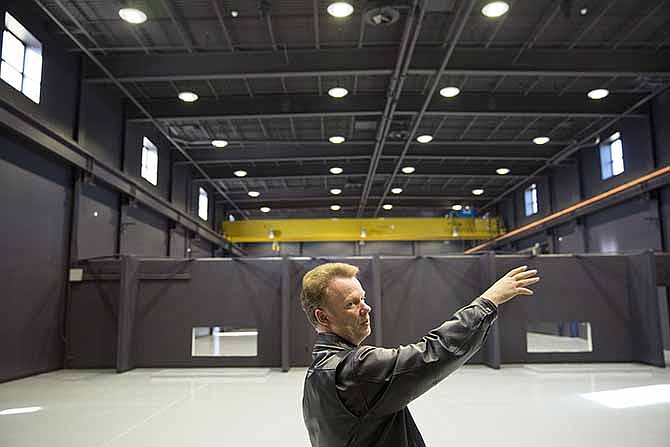A homemade Philippine cannon made of ironwood was too large. A World War I German mortar was too heavy.
And most of the books, photos and papers held by the Museum of Missouri Military History took up too much space.
In the former location on the Missouri River's edge on the Ike Skelton Training Site, that is.
The 14-year-old display cases have been carefully dismantled in the main floor of the oldest remaining building from the site's days as the Algoa prison.
Now, Curator Charles Machon along with interns, volunteers and Guard members will sort and re-create exhibits to fit into the new museum space, in the converted mechanical school maintenance bays, adjacent to the Patriot Center at the entrance to the base.
In addition to multiplying the museum's usable space for both exhibits and research, the new location - tentatively expected to open in the summer of 2014 - will be more convenient for visitors.
The museum, which opened in 1999, sees about 3,000 visitors annually. Relocating next door to the one-stop shop for military services, officials expect their numbers to increase dramatically.
"This is serious business, a large step forward," said Major Alan Brown.
Staying within the $750,000 federal limit for such a renovation, the museum has sealed all but two bay doors, added insulation and dry wall to the two-story facility, repainted the floor and walls, installed energy-efficient heating and cooling units, and added LED lighting.
The improved environment - controlled climate and shielded from UV rays - will be much better for the museum's fragile and aging holdings, too.
Although his space has multiplied nearly six times, Machon's budget has not. His staff has developed innovative ways to save costs and still deliver an optimal museum experience.
For example, commercially made, museum-quality artifact stands cost approximately $20 each. By repurposing some of the materials from the former display cases, the maintenance department will create 60 stands at only the cost of the glue and applicator.
During the dismantling process, museum officials have identified pieces that visitors most likely would want to know more about. Incorporating technology, they developed scannable QR codes, which will allow those with smartphones to access recommended web sources for more information.
Staff have been seeking ideas, like the QR codes, from other museums.
As the new site begins to take shape this spring, the museum will continue to look for the best, affordable options to share Missouri's military history.
That might include a static display of macro-artifacts, like a Sheridan tank, and a field-tent theater.
Inside the 25 new display boxes, items like the World War I German mortar will be out for public viewing, packaged with other antiques from the era, such as uniforms and manuals.
The Spanish-American War exhibit now may include many more of the museum's artifacts, including the Philippine cannon.
"We only had a small section for the Spanish-American War," Machon said of the former site. "Now we have more space to help tell the story."
A display Machon is looking forward to building will feature "trench art," such as a cigarette lighter made with shell casings and coins and a 90 millimeter shell formed into a pitcher engraved with names from the 1904 Missouri Artillery unit.
Pieces like these provide more depth to the history of the military, Machon said.
"They could take the instruments of war and make something else," he said.

